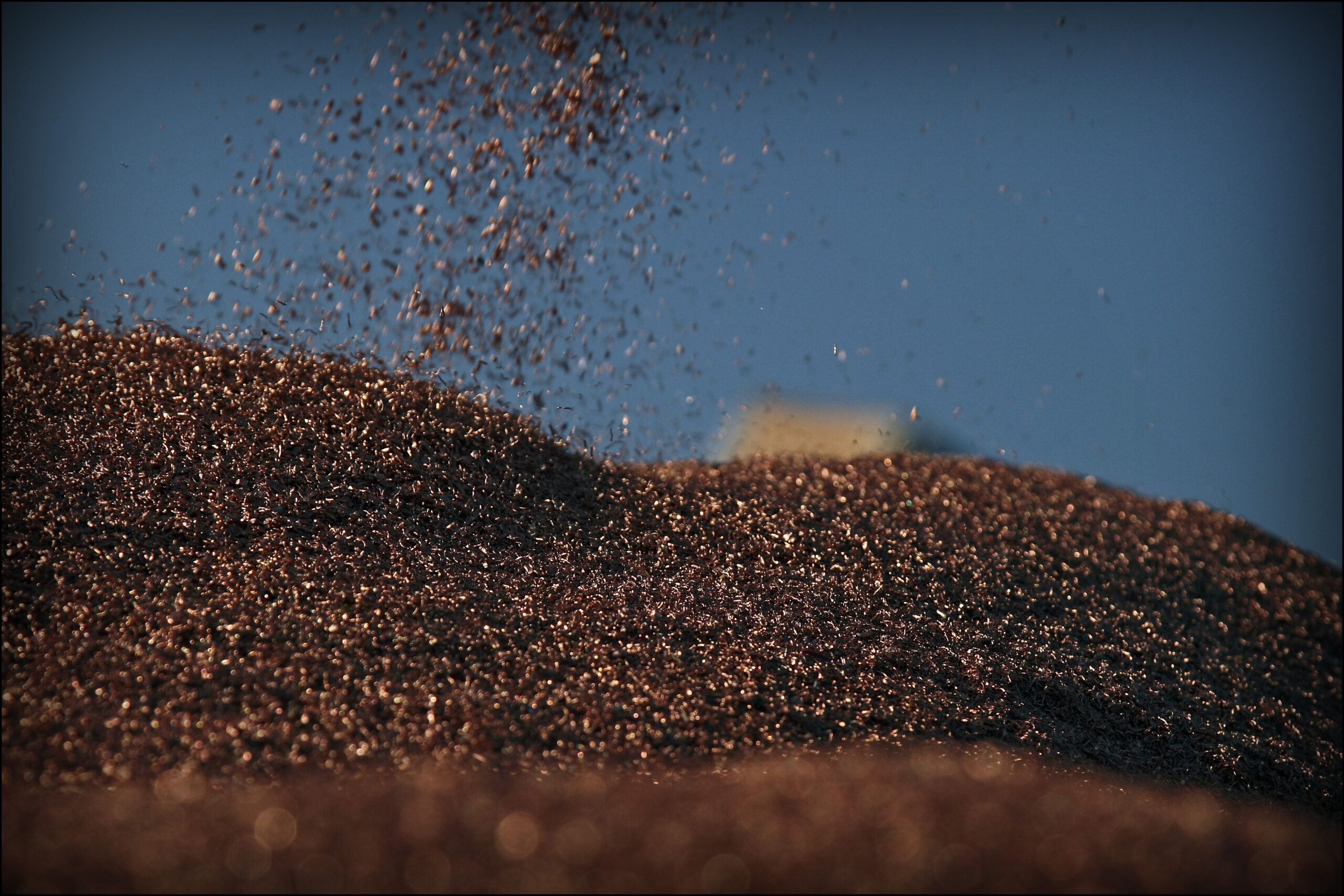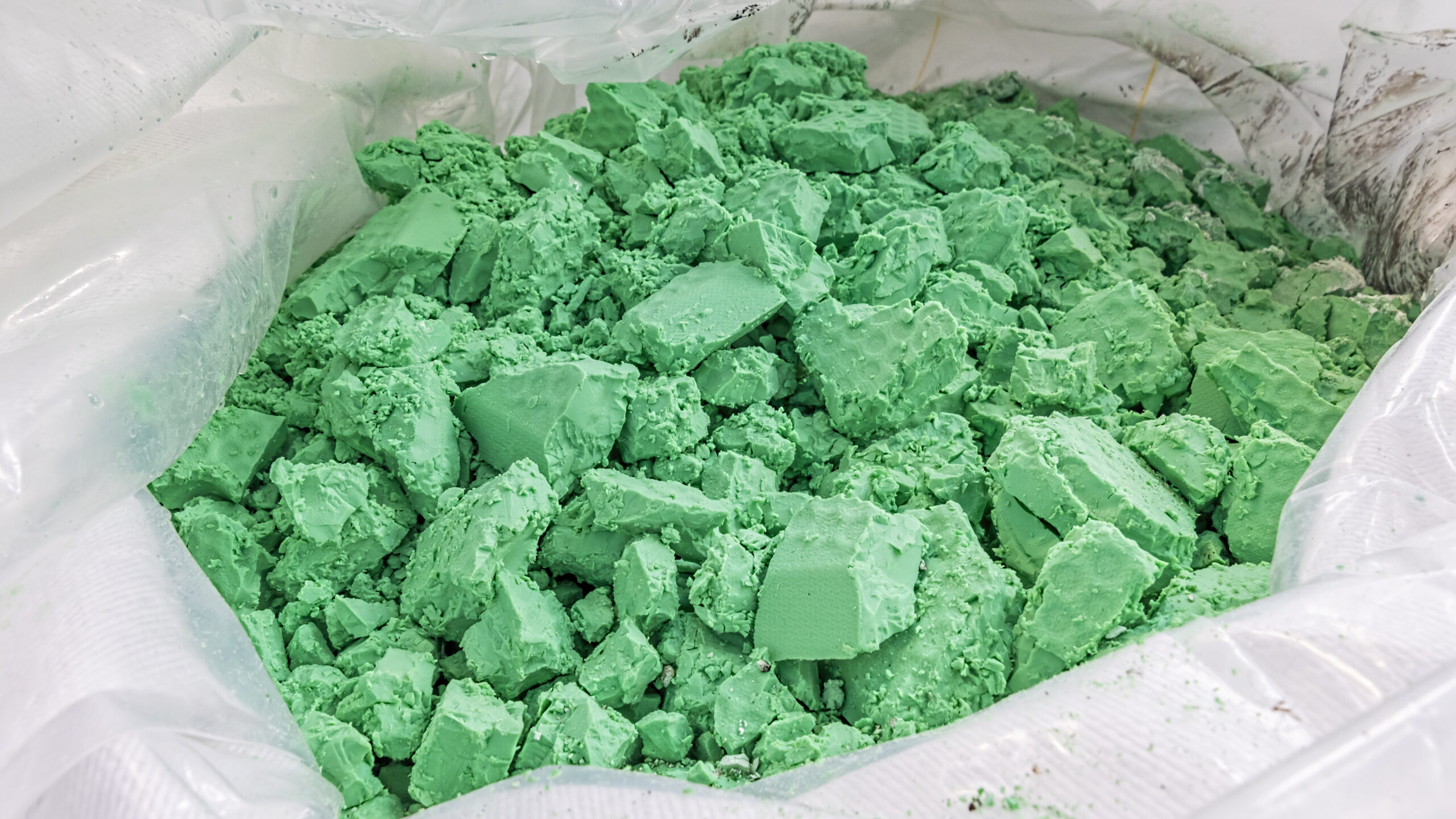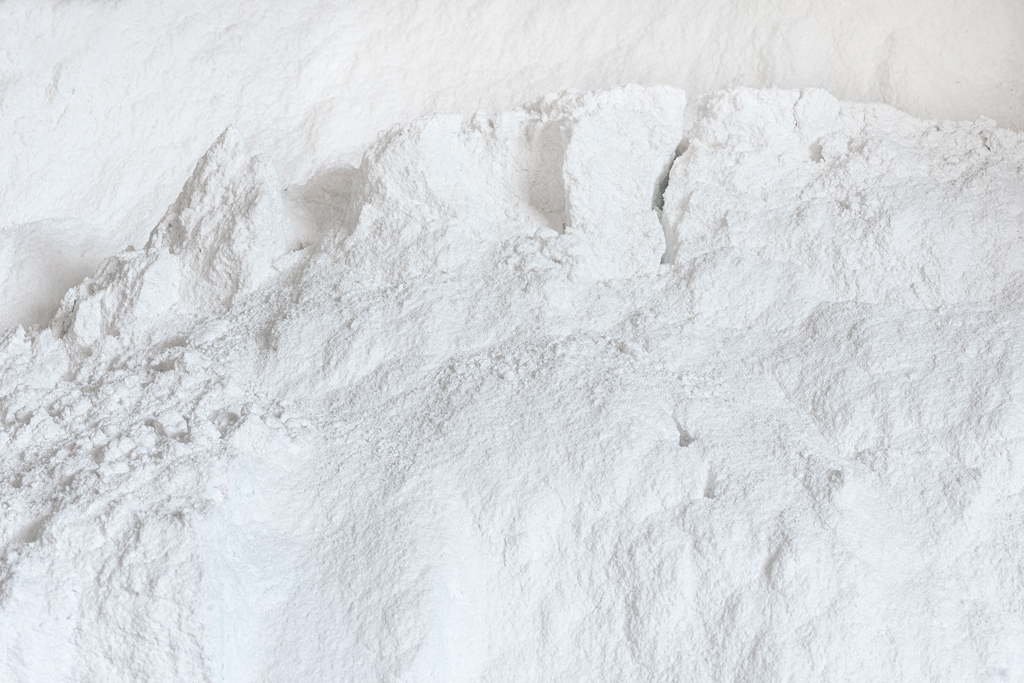OBJECT
The purpose of this document is to establish the technical specifications for Iron Silicate not intended for CE marking for construction.
SCOPE
This procedure applies to all iron silicate from the electric furnace, whether washed or unwashed, except the unwashed silicate marketed as synthetic aggregate with CE marking. The requirements for that are established in Procedure SH-Pr 01, Manual for the Control of Iron Silicate Production, CE, and in the documents referenced in it.
REFERENCES
UNE-EN ISO 11126-3
Safety Data Sheet
DEFINITIONS
Apparent density (overall): This refers to the density in loose granular materials, and would include inter-particle gaps.
Apparent density: This refers to the density of each particle; that is, considering that each particle has water-permeable holes. The clearest example is volcanic rock, which is very porous
Density after drying: Actual material density, with no water in the holes.
- OVERVIEW
CHEMICAL DESCRIPTION
Atlantic Copper iron silicate is a granulated, chemically stable solid. Its typical chemical composition, and limit values where applicable, are as follows:
|
Cu |
S |
Fe3O4 |
SiO2 |
Al2O3 |
MgO |
Zn |
Fe |
Pb |
CaO |
| Typical comp. |
% |
1 |
|
|
(26.33) |
|
|
|
(41.48) |
0.3 |
|
| Limit |
|
≤ 0.7 |
< 5 |
|
< 4 |
< 0.9 |
< 2 |
|
< 0.6 |
< 2 |
|
Au |
Ni |
Cd |
Co |
As |
Sb |
|
|
|
|
| Typical comp. |
ppm |
|
100 |
|
200 |
650 |
200 |
|
|
|
|
| Limit |
< 0.1 |
|
< 50 |
|
<1500 |
|
|
|
|
|
Iron Silicate has two mineral phases: Olivine (Fe2SiO4) at a concentration of around 90%; and iron oxide and silicon, the remaining 10%.
The existence of spherical structures made up of oxide crystals, included in a matrix of glass-type silicate crystals with no unbound metallic particles, is checked using optical reflection microscopy and transmission microscopy techniques.
It can be ensured that there is no unbound crystallized silica, either in the form of quartz, tridymite or cristobalite, because the melt does not complete its crystallization sequence as a result of the cooling it is subjected to with water at the time of granulation. The last phase that should crystallize is tridymite, but the drop in temperature causes the residual liquid to be transformed into glass, and tridymite does not form.
PHYSICAL DESCRIPTION
In general terms, unless there is any other internal or contractual document that indicates otherwise, for a granulometry expressed as Xi – Xs (in mm), these are the specifications:
Upper limit:
A maximum of 10% of the particles are oversized; i.e., they do not pass through the Xs mm sieve.
Lower limit:
A maximum of 10% of the particles are undersized; i.e. they pass through the Xi mm sieve.
Exception: For Xi = 0.2 mm only, the maximum would be 5%, but this is a nominal size that A.C. does not generally offer.
- SPECIFICATIONS
1.1 GENERAL SPECIFICATIONS
2.1 A) CHEMICAL COMPOSITION
The only chemical composition requirements are the limits shown in the table in the preceding paragraph.
2.1 B) PHYSICAL CHARACTERISTICS
This is a shiny black vitreous material.
2.1 C) GRANULOMETRY
Within certain limits, iron silicate granulometry is adapted to commercial needs. So the granulometric specifications can be agreed upon with each client for each case, especially in the case of granules.
2.1 D) HAZARDS
Stable, non-toxic and non-hazardous product (not classified as hazardous, in accordance with Regulation (EC) No. 1272/2008 [EU-GHS/CLP]). It is registered in REACH under registration number 01-2119513228-45-0003, as stated in the Safety Data Sheet.
1.2 PARTICULAR SPECIFICATIONS
So far, general terms common for all products have been explained. Other specifications for the most common specific uses are listed below, although it should be noted that customers may sometimes make special requests, such as a specific granulometry.
2.2 A) IRON SILICATE FOR CEMENT (WASHED OR UNWASHED)
In addition to the limits indicated above, these limits will be met for cements:
|
S |
SiO2 |
Al2O3 |
MgO |
Fe |
Pb |
CaO |
|
| % |
≤ 0.7 |
(27.33) |
(2, 4) |
< 0.8 |
(40, 50) |
< 0.6 |
(0.8, 2) |
|
|
Cr |
Cr (VI) |
As |
|
|
|
|
|
| ppm |
< 400 |
< 2 |
< 1500 |
|
|
|
|
|
2.2 B) WASHED IRON SILICATE FOR ABRASIVES
The abrasive fulfills the requirements of the ISO 11126-3 standard, thus meeting the following specifications:
| Property |
Requirement |
Units |
Test Method |
| Water soluble chlorides |
< 0.0025 |
% (m / m) |
ISO 11127-7 |
| 25 |
ppm |
| Property |
Requirement |
Units |
Test Method |
| Unbound crystallized silica content |
< 1 |
% (m / m) |
X-ray diffraction |
| Apparent density |
(3.7 to 3.9) ·103 |
Kg / m3 |
ISO 11127-3 |
| Hardness |
> 6 |
Mohs scale |
ISO 11127-4 |
| Moisture |
< 0.2 |
% (m / m) |
ISO 11127-5 |
| Conductivity of the aqueous extract |
< 25 |
mS / m |
ISO 11127-6 |
| Asbestos |
Not present |
| Unbound crystallized silica |
Not present |
| Water absorption |
<1 |
% |
|
| Components that corrode and weaken the adhesion |
Not present |
Products in compliance with ISO 11126-3 must be referred to as follows:
Abrasive ISO 11126 N/CU/G Xi-Xs.
This nomenclature means the following:
| ISO 11126 |
N/CU |
G |
X |
X |
| Reference standard |
Non-metallic, Cu slag |
Grit |
Particle size range, in mm |
Atlantic Copper uses the following designations for these products:
| Official name |
Other designation |
| ISO 11126 N/CU/G 1.4- 2.8 Abrasive |
Extra-coarse abrasive (known as “Martinica” by some customers) |
| ISO 11126 N/CU/G 0.5- 2.8 Abrasive |
Coarse abrasive (known as “M8” by some customers) |
| ISO 11126 N/CU/G 0.5- 1.4 Abrasive |
Fine abrasive (known as “M25” by some customers) |
The complete designation must be indicated on all orders.
In addition, there are two other products from the drying and sorting plant. They are not subject to ISO 11126, although their properties are the same as those of abrasives except in terms of particle size:
| Name |
Description |
| Coarse granules |
> 3 mm |
| Fine granules |
< 0.75 mm |






